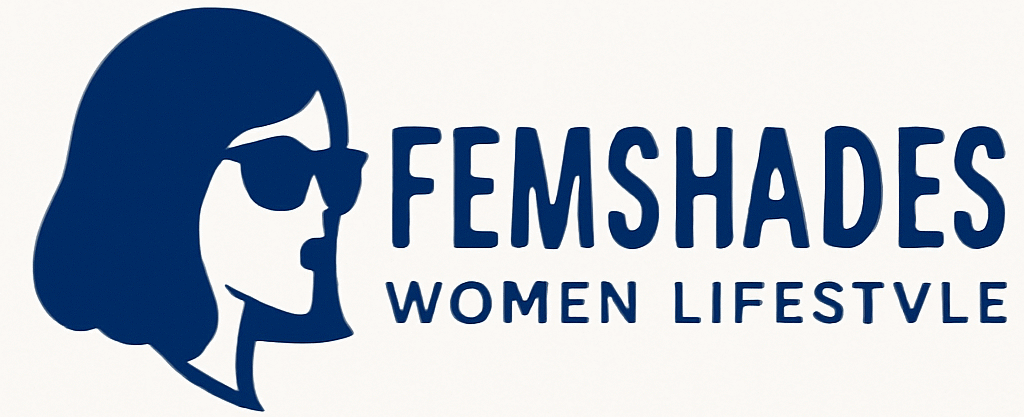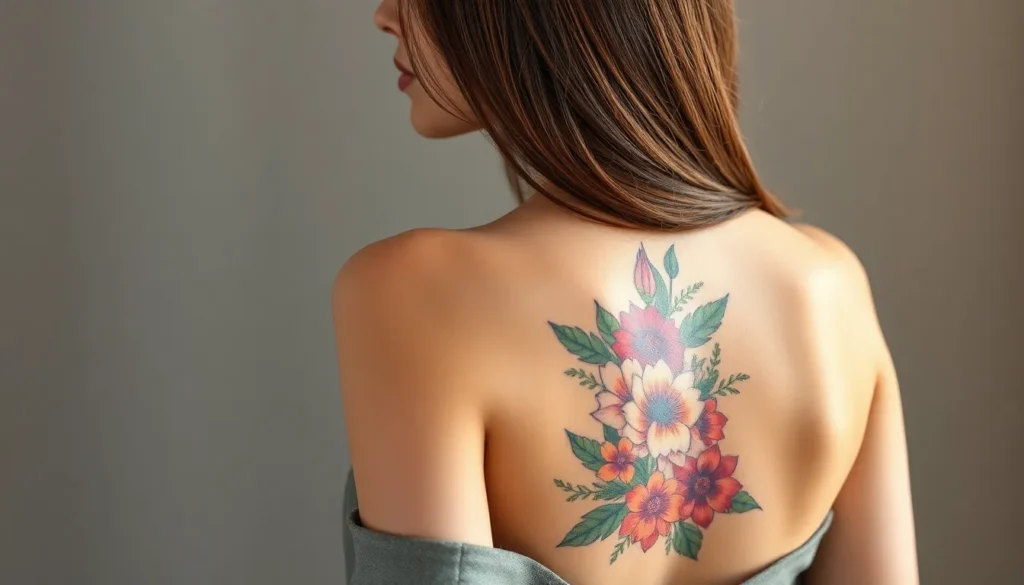We’ve all been there – staring at that lower back tattoo from years past and wondering what we were thinking. Whether it’s a tribal design that no longer reflects your style or an ex’s name you’d rather forget, you’re not alone in wanting a fresh start.
Lower back tattoo cover-ups have become incredibly popular as more women seek to transform their ink into something they’ll love for years to come. The good news? This area offers plenty of space for creative cover-up designs that can completely transform your original tattoo.
From elegant florals that cascade down your spine to bold geometric patterns that make a statement, we’ll explore stunning cover-up ideas that’ll have you falling in love with your lower back tattoo all over again. Ready to turn that regrettable ink into a masterpiece you’ll be proud to show off?
Understanding Lower Back Tattoo Cover Up Basics for Women
Successful lower back cover ups require careful planning and proper understanding of key fundamentals. We’ll guide you through the essential aspects that determine whether your transformation will achieve stunning results.
Assessing Your Existing Tattoo
Size and darkness determine your cover up possibilities more than any other factors. Large, dark tattoos need bigger designs with bold elements to effectively mask the original ink. Small or faded tattoos offer more flexibility for delicate patterns like butterflies, flowers, or script work.
Age affects your tattoo’s coverage potential significantly. Older tattoos typically fade and blur around the edges, making them easier to incorporate into new designs. Fresh tattoos with sharp lines require more strategic planning and often need laser lightening sessions before cover up work begins.
Color composition plays a crucial role in design selection. Black ink requires darker cover up elements, while colored tattoos can sometimes be incorporated into the new design’s color scheme. Red and orange pigments prove most challenging to cover completely without laser pre-treatment.
Choosing the Right Cover Up Artist
Portfolio review should focus specifically on cover up work rather than general tattoo artistry. We recommend examining before and after photos of similar lower back transformations to gauge the artist’s expertise. Artists who specialize in cover ups understand color theory, design layering, and strategic placement techniques.
Consultation discussions help determine realistic expectations and timeline requirements. Experienced cover up artists will honestly assess whether your existing tattoo can be covered in one session or requires multiple appointments. They’ll also explain potential limitations and suggest alternative approaches when necessary.
Studio reputation matters significantly for cover up procedures since they’re more complex than standard tattoos. Check reviews specifically mentioning cover up work and ask about the artist’s training in advanced techniques like color saturation and negative space utilization.
Considering Skin Tone and Placement
Skin undertones affect how new ink appears over existing tattoos and influence color choices. Cool undertones work best with blues, purples, and blacks for dramatic cover ups. Warm undertones complement earth tones, reds, and oranges for more natural looking transformations.
Placement anatomy on the lower back presents unique challenges due to the area’s natural curves and movement. Designs must account for how the skin stretches and contracts during daily activities. Artists experienced in this region understand how to create artwork that maintains its integrity across the lower back’s contours.
Healing considerations vary based on skin type and the lower back’s positioning. This area experiences friction from clothing and chairs, potentially affecting the healing process. Darker skin tones may require different approaches to achieve optimal color saturation and coverage results.
Floral Lower Back Tattoo Cover Up Designs
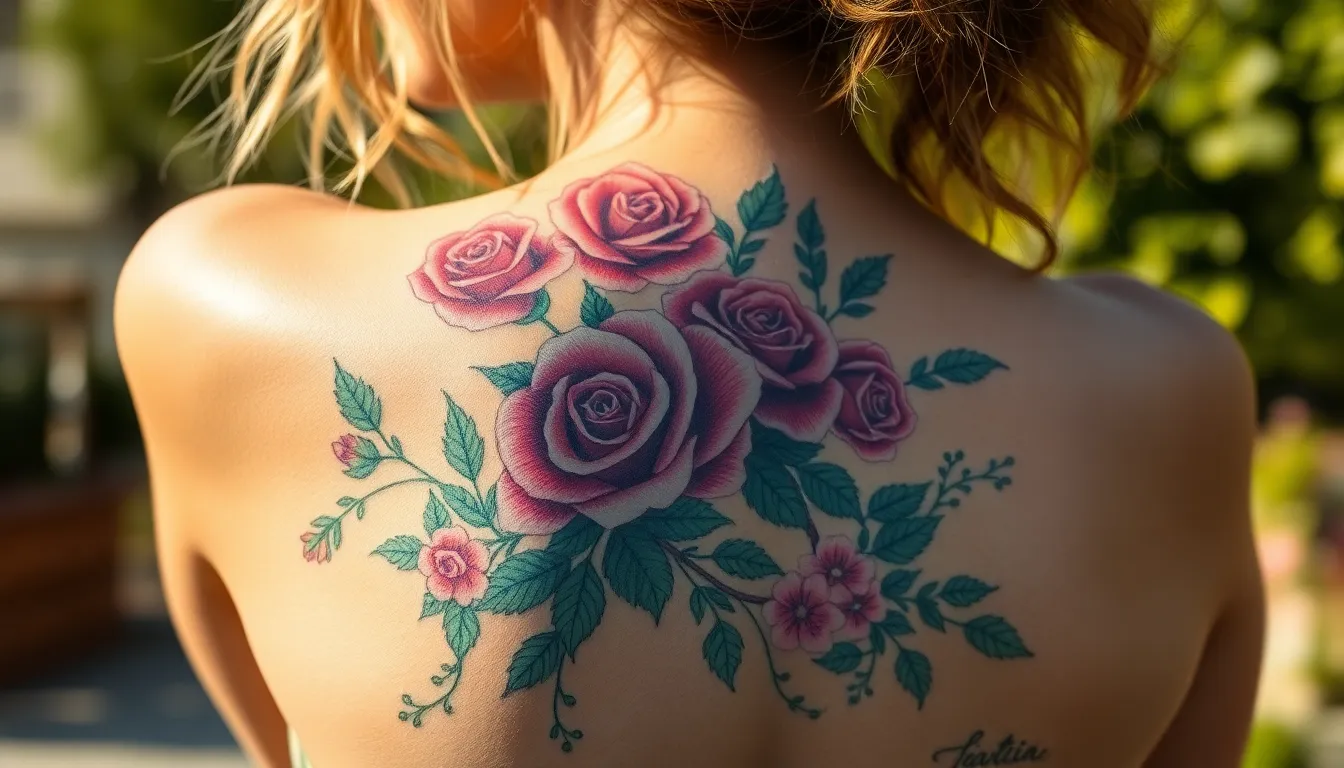
Floral designs offer some of the most versatile and stunning cover-up options for transforming unwanted lower back tattoos. These nature-inspired patterns work exceptionally well because they can incorporate varying sizes, colors, and organic shapes that naturally conceal existing ink.
Large Rose Arrangements
Rose arrangements provide exceptional coverage for darker or more prominent tattoos that need complete concealment. We’ve seen artists create breathtaking designs using multiple roses in different stages of bloom, from tight buds to fully opened flowers. Colors can range from classic deep reds and soft pinks to bold purples and elegant black and gray compositions.
Strategic placement of larger blooms helps draw attention away from problematic areas while smaller roses fill in gaps and create visual flow. Artists often incorporate thorny stems and detailed leaves to add texture and depth to the overall composition. The natural curves of rose petals complement the lower back’s anatomy beautifully.
Layering techniques allow roses to create dimensional effects that effectively mask underlying tattoos. We recommend discussing color saturation with your artist, as deeper hues provide better coverage for existing dark ink.
Botanical Garden Scenes
Botanical garden scenes transform your lower back into a lush industry that can completely reimagine the space. These comprehensive designs typically include multiple flower varieties, creating an immersive natural environment. Artists can incorporate peonies, hydrangeas, sunflowers, and wildflowers to build complex, layered compositions.
Background elements like flowing grass and scattered leaves help fill negative space while providing additional coverage for stubborn areas. We’ve observed that these scenes work particularly well for covering tribal designs or text tattoos that span wider areas.
Detailed botanical illustrations can include stems, roots, and even small insects or butterflies to enhance realism. The organic randomness of garden scenes allows artists creative freedom to work around existing tattoos without being constrained by symmetrical patterns.
Vine and Leaf Patterns
Vine patterns offer incredible flexibility for cover-ups because they can wind and curve naturally around existing tattoo elements. These designs work exceptionally well for covering lower back tattoos with awkward shapes or multiple separate pieces. Artists can create delicate, feminine vines with small leaves or bold, dramatic patterns with larger foliage.
Intertwining elements create visual complexity that helps disguise underlying ink while maintaining aesthetic appeal. We’ve seen successful cover-ups using ivy, grape vines, morning glory, and tropical leaf patterns. The connecting nature of vines allows for seamless integration across the entire lower back area.
Varying line weights and shading techniques in vine designs provide artists with tools to strategically place darker elements over problematic areas while using lighter details for accent work. These patterns can extend upward toward the middle back or downward toward the hip area for comprehensive coverage.
Geometric Lower Back Tattoo Cover Up Options
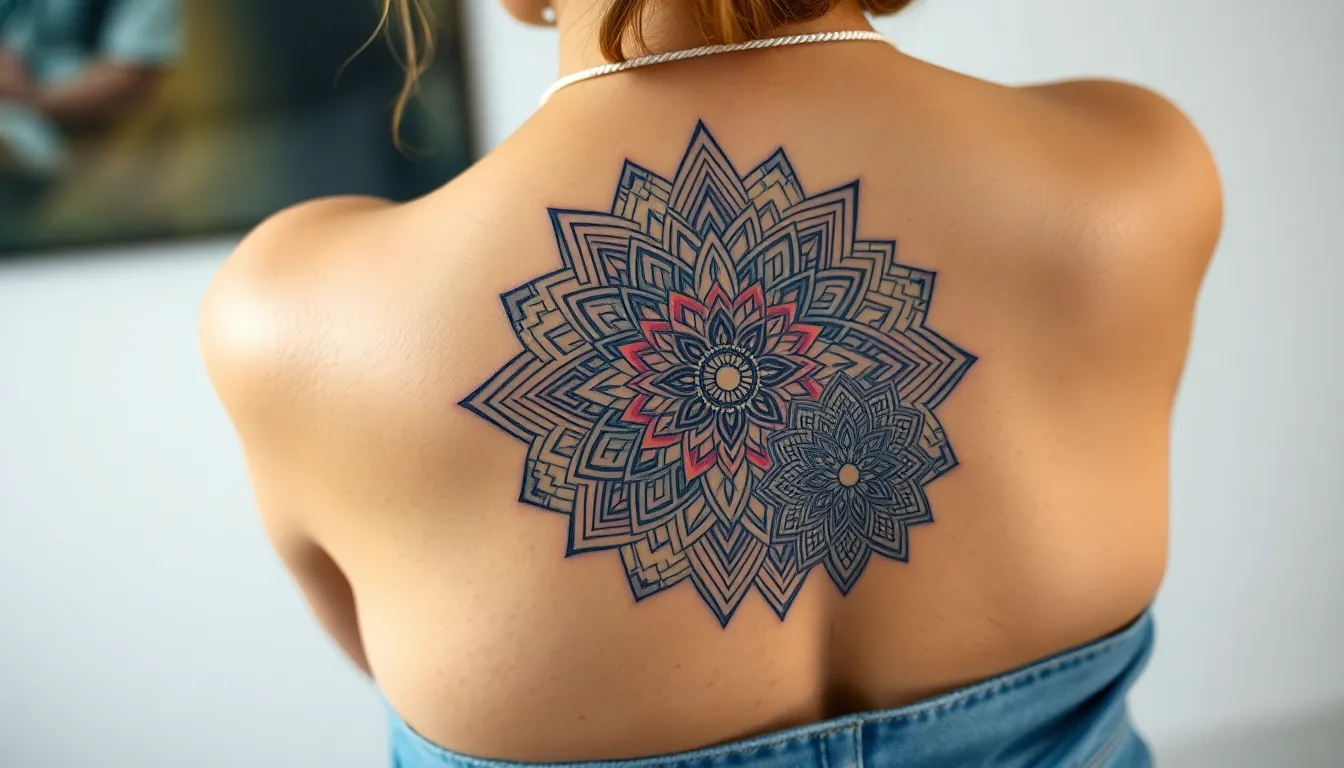
Geometric designs offer bold, structured alternatives to floral patterns for lower back tattoo transformations. These mathematical and symmetrical approaches create striking visual impact while effectively concealing unwanted ink.
Mandala Designs
Mandala patterns serve as powerful cover up answers through their intricate circular compositions and layered details. These designs feature complex geometric arrangements that radiate from central points, creating natural focal areas that draw attention away from underlying tattoos. We recommend mandala styles that incorporate both floral and geometric motifs for maximum versatility in concealing various tattoo sizes and darkness levels.
The circular nature of mandalas works exceptionally well for the lower back’s curved anatomy, allowing artists to customize dimensions based on existing tattoo coverage needs. Bold line work combined with detailed shading creates depth that effectively masks previous ink while maintaining visual appeal. Artists can adapt mandala complexity levels to match individual cover up requirements, from simple geometric circles to elaborate multi layered compositions.
Sacred Geometry Patterns
Sacred geometry transforms lower back cover ups into meaningful artistic statements through spiritual symbolism and mathematical precision. These patterns emphasize triangles, circles, and hexagons arranged in harmonious compositions that create visual depth and complexity. We find these designs particularly effective for covering tattoos because their interconnected shapes naturally camouflage underlying ink through strategic placement and shading techniques.
The mystical aspects of sacred geometry add profound symbolic layers to cover up work, making transformed tattoos feel intentional and purposeful. Artists use these mathematical relationships to create balanced compositions that work with the body’s natural curves while providing adequate coverage. Popular sacred geometry elements include flower of life patterns, Metatron’s cube designs, and golden ratio spirals that expand coverage areas naturally.
Art Deco Inspired Motifs
Art Deco motifs bring sophisticated vintage elegance to lower back tattoo cover ups through their distinctive geometric shapes and ornate detailing. These designs characteristically feature bold lines, metallic accent opportunities, and structured patterns that create dramatic visual impact. We appreciate how Art Deco’s emphasis on symmetry and geometric forms provides excellent coverage potential while maintaining refined aesthetic appeal.
The style’s inherent boldness works advantageously for cover up purposes, as artists can incorporate darker shading and stronger line work to mask existing tattoos effectively. Ornate details typical of Art Deco designs create visual complexity that naturally conceals underlying ink through layered geometric elements. Artists often combine fan shapes, chevron patterns, and stepped geometric forms to create comprehensive coverage answers that reflect individual style preferences while achieving successful concealment results.
Nature-Inspired Lower Back Tattoo Cover Up Ideas
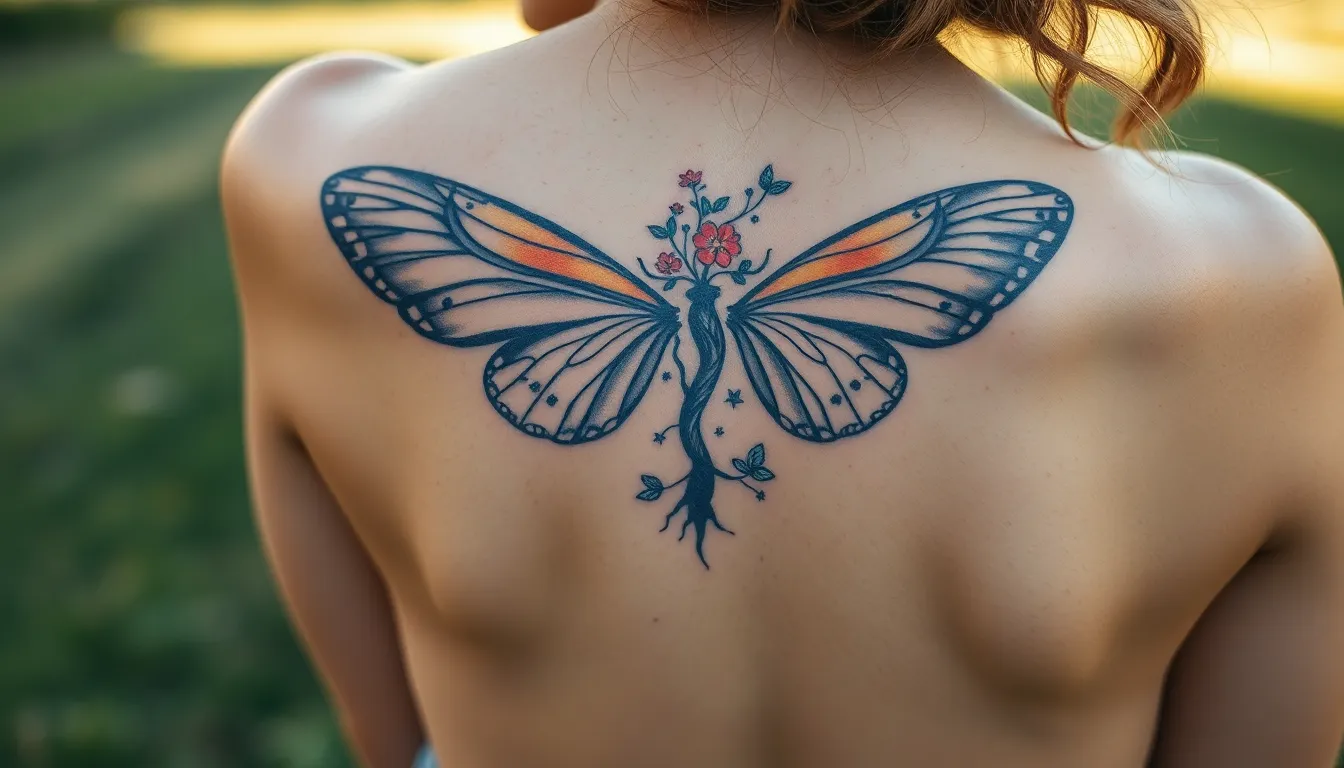
Nature designs offer endless possibilities for transforming your lower back tattoo into a stunning piece of art. These organic motifs blend seamlessly with your body’s natural curves while providing excellent coverage for unwanted ink.
Butterfly and Moth Designs
Delicate butterfly wings serve as one of the most elegant cover up answers for lower back tattoos. These intricate designs feature detailed wing patterns that effectively conceal darker ink while creating a feminine and graceful appearance. We recommend positioning the wings symmetrically across your lower back to maximize coverage area.
Moth silhouettes provide excellent coverage for larger existing tattoos through their broad wingspan and detailed body structures. These nocturnal creatures offer a more mysterious aesthetic compared to butterflies while maintaining the same coverage benefits. Artists can incorporate realistic shading techniques to blend the moth design with your skin tone.
Multiple butterfly clusters work exceptionally well for covering fragmented or poorly aged tattoos. This approach uses various sized butterflies positioned strategically to camouflage unwanted elements while creating a ever-changing, flowing composition across your lower back.
Industry Scenes
Forest scenes create expansive natural environments that can completely transform your lower back area. These designs incorporate elements like towering trees, delicate leaves, and serene lakes to establish a cohesive natural tableau. Artists use varying depths and shading to create realistic landscapes that effectively hide underlying tattoos.
Mountainous horizons offer dramatic coverage through sweeping scenic views that span your entire lower back. These designs feature mountain ranges at sunset or sunrise, using gradient techniques to blend colors naturally. The broad scope of these landscapes makes them ideal for covering larger or darker existing tattoos.
Waterfall compositions combine flowing water elements with rocky terrain to create ever-changing natural scenes. These designs use the natural movement of water to disguise unwanted tattoo lines while adding visual interest through cascading elements.
Tree of Life Concepts
Roots and branches create powerful symbolic designs that represent growth and continuity while providing excellent tattoo coverage. These intertwining elements can be positioned to strategically cover existing ink through their organic flowing patterns. Artists often extend the root system across the lower back to maximize coverage area.
Floral accents enhance tree designs by adding colorful flowers and detailed leaves throughout the composition. These botanical elements provide additional coverage opportunities while creating visual depth and natural beauty. Common additions include cherry blossoms, magnolia flowers, and seasonal foliage.
Celtic tree variations incorporate traditional knotwork patterns with organic tree elements to create unique cover up designs. These designs blend cultural symbolism with natural imagery while providing strategic coverage through their intricate interconnected patterns.
Tribal and Cultural Lower Back Tattoo Cover Up Styles
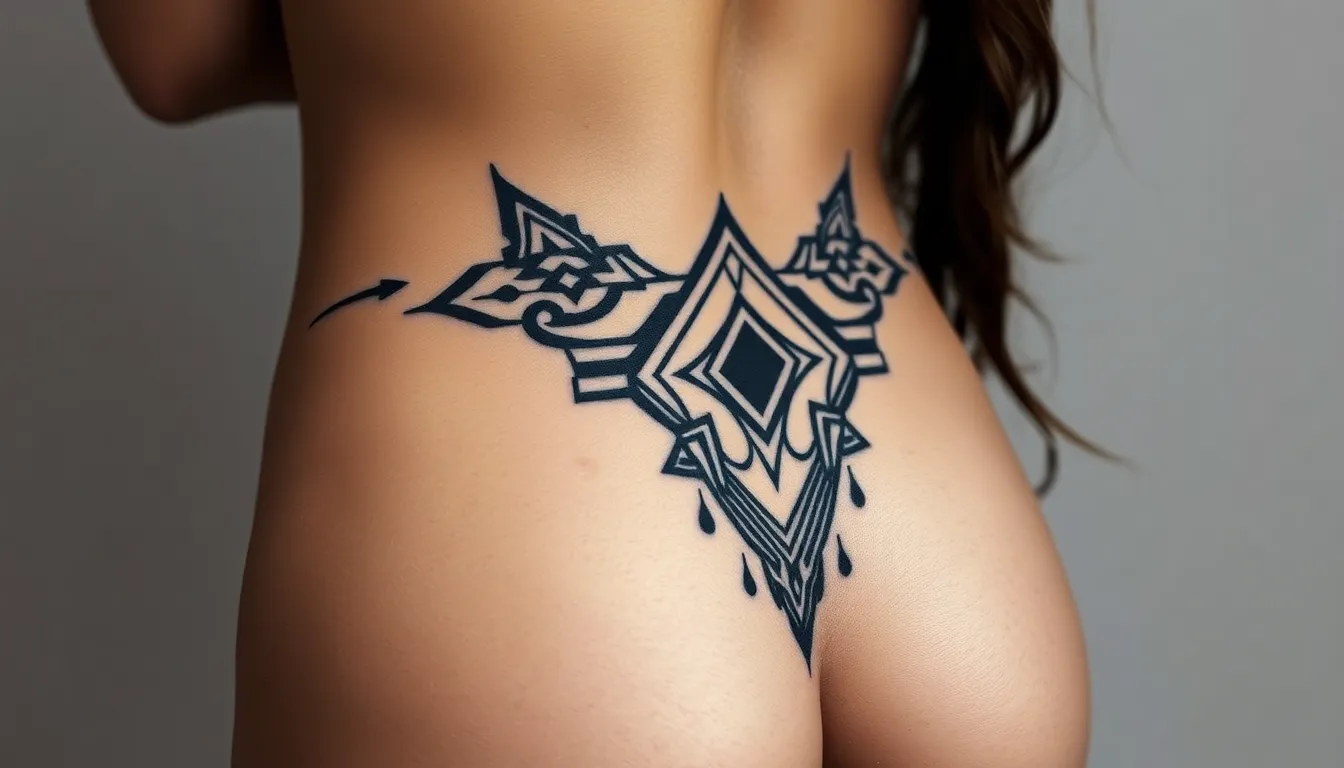
Bold cultural designs offer powerful answers for covering unwanted lower back tattoos while adding meaningful symbolism to your body art. These styles use strong geometric patterns and intricate linework that naturally draw attention away from underlying ink.
Modern Tribal Interpretations
Contemporary tribal tattoos blend traditional elements with modern design sensibilities to create striking cover-ups. These interpretations feature bold black lines and geometric shapes that effectively layer over existing tattoos through intricate pattern work. Artists often incorporate angular designs, flowing curves, and interconnected elements that span the entire lower back area for maximum coverage.
Layered tribal patterns work exceptionally well for covering darker or heavily saturated original tattoos. The strategic placement of thick black lines creates visual depth while the geometric shapes add contemporary flair to ancient motifs. Modern tribal designs also allow for customization, enabling artists to incorporate personal elements while maintaining the style’s characteristic bold aesthetic.
Celtic Knotwork Designs
Celtic knotwork provides elegant coverage through interconnected loops and spirals that seamlessly flow across the lower back region. These designs feature continuous patterns that create visual unity while effectively concealing underlying tattoos through their complex weaving structure. The interlaced elements naturally draw the eye along the design’s path, minimizing focus on any previous artwork beneath.
Rich symbolism accompanies Celtic patterns, with each knot representing concepts like eternal love, spiritual growth, or family bonds. Artists can customize the complexity level based on the original tattoo’s coverage requirements, incorporating additional spirals or expanding the knotwork to achieve optimal concealment. The mystical quality of Celtic designs adds an elegant touch that transforms the lower back into a canvas of meaningful artwork.
Polynesian Inspired Patterns
Polynesian tattoo motifs deliver powerful coverage through bold black lines and traditional symbols representing protection, strength, and tribal heritage. These patterns often feature geometric elements like triangles, waves, and spearheads that create striking visual compositions across the lower back area. The dense black ink coverage makes Polynesian designs particularly effective for concealing various tattoo styles underneath.
Traditional Polynesian elements carry deep cultural significance, with exact patterns representing different life experiences or spiritual beliefs. Artists can incorporate motifs like ocean waves for life’s journey, turtle shells for longevity, or spearheads for courage and warrior spirit. The versatility of Polynesian patterns allows for both full coverage designs and selective placement strategies, making them suitable for various cover-up situations while maintaining authentic cultural aesthetics.
Script and Quote Lower Back Tattoo Cover Up Solutions
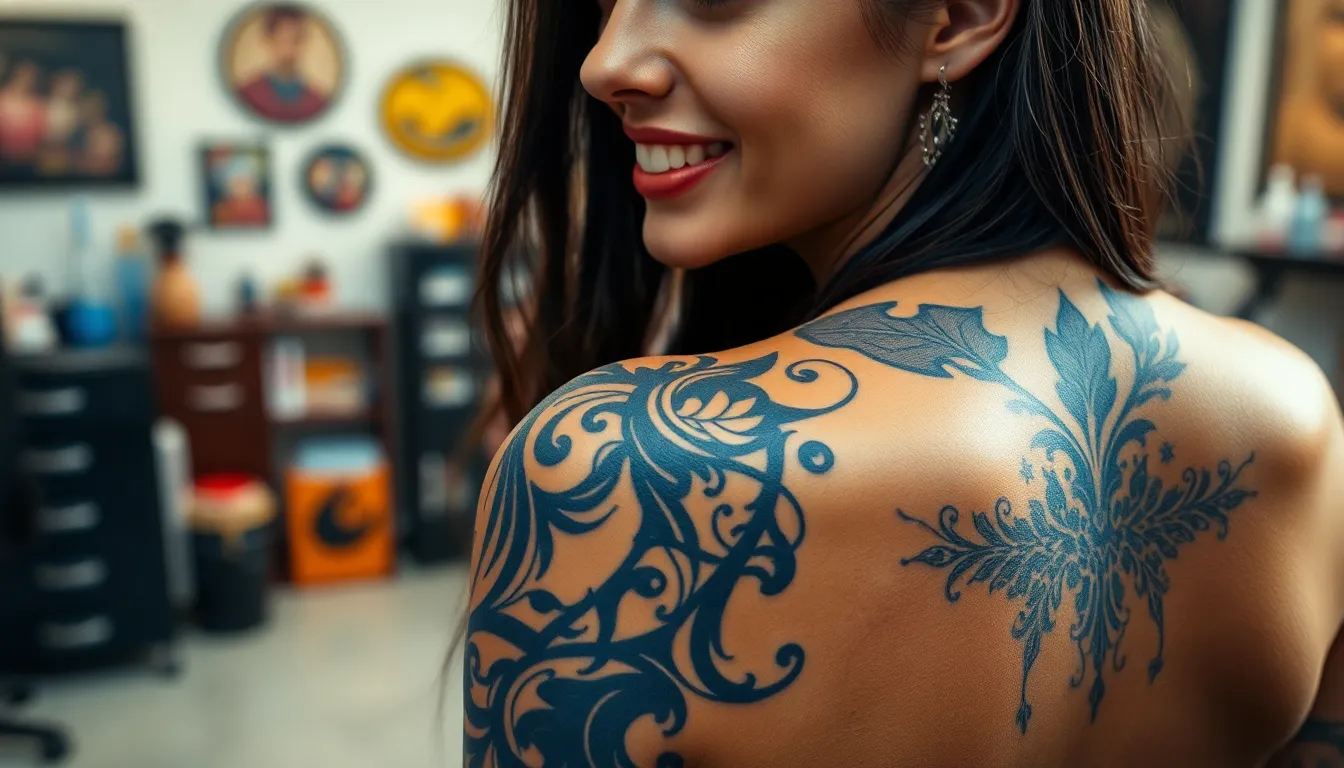
Script and quote cover ups transform unwanted lower back tattoos into meaningful personal statements. These flowing designs work exceptionally well for concealing previous ink while adding emotional significance to your body art.
Meaningful Phrase Designs
Meaningful phrases create powerful cover up answers that resonate with your personal journey. Inspirational quotes, memorial messages, and motivational mantras adapt beautifully to cover existing tattoos through creative placement and negative space utilization. We’ve seen clients choose affirmations like “She believed she could, so she did” or “Strength through struggle” to transform their regrettable ink into daily reminders of personal growth.
These designs extend across the lower back area, allowing artists to strategically place words where they’ll best conceal underlying tattoos. Phrases can be interlaced with symbolic elements like small hearts, stars, or infinity symbols to further disguise old design lines. The flexibility of text placement means we can work around existing tattoo shapes while creating something entirely new and meaningful.
Calligraphy Style Lettering
Calligraphy offers exceptional cover up potential through its distinctive thick and thin stroke variations. These artistic letterforms naturally mask underlying tattoo details while creating elegant, sophisticated designs that complement the lower back’s natural curves. Skilled tattoo artists use calligraphic techniques to overlay existing ink, incorporating decorative scrolls and embellishments that completely transform the original tattoo.
The versatility of calligraphy styles ranges from modern brush lettering to traditional copperplate scripts. Each style provides different coverage benefits, with bolder scripts offering more concealment power for darker existing tattoos. Artists often combine calligraphy with subtle shading techniques that further blend the old tattoo into the new design.
Foreign Language Scripts
Foreign language scripts provide unique cover up opportunities through their visually complex letterforms and cultural significance. Arabic calligraphy, Sanskrit verses, Chinese characters, and ancient alphabets create intricate patterns that effectively disguise old tattoo lines while adding personal meaning to your body art. These scripts work particularly well for covering linear or geometric existing tattoos.
The artistic nature of scripts like Devanagari or Hebrew offers additional design flexibility through their flowing connections and decorative elements. We recommend consulting with artists experienced in these exact script styles to ensure accurate representation and proper cultural respect. Many clients choose phrases that reflect their heritage, spiritual beliefs, or life philosophies in these beautiful traditional scripts.
Animal-Themed Lower Back Tattoo Cover Up Concepts
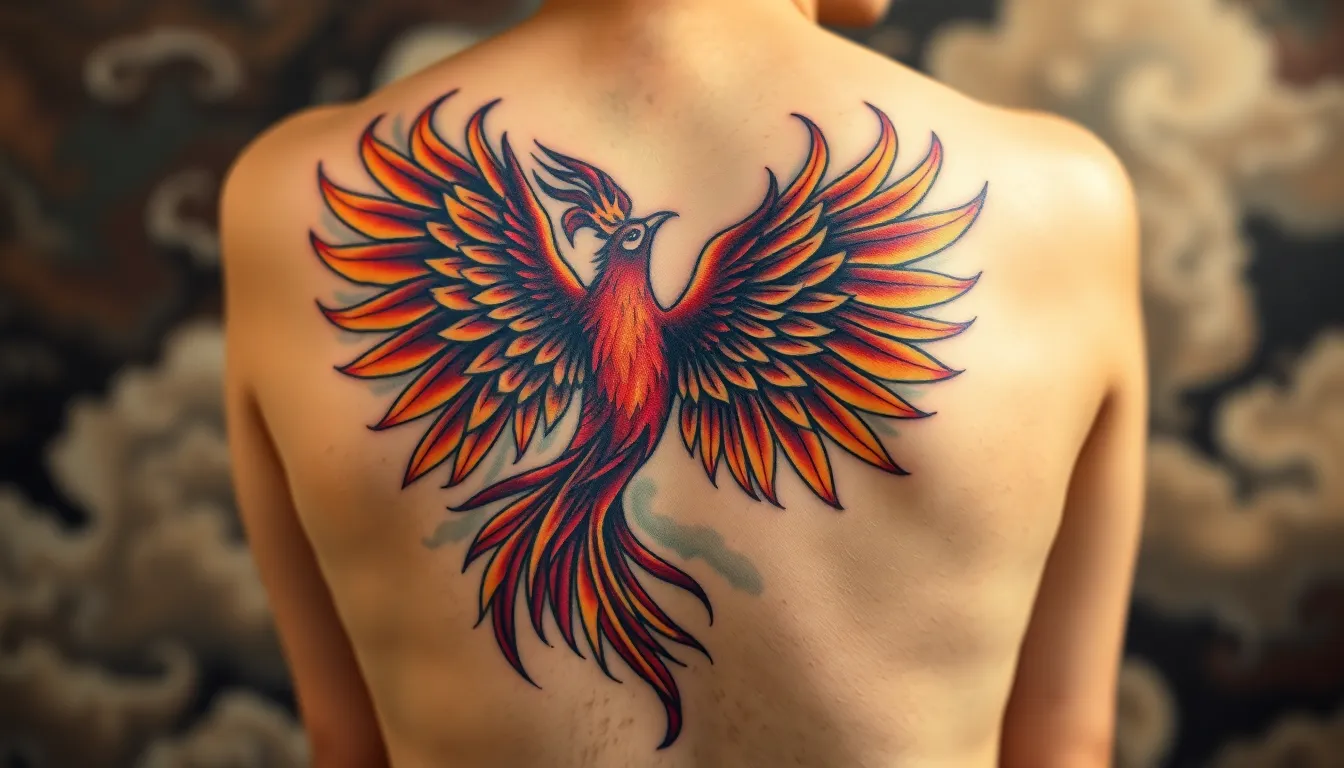
Animal themed designs offer powerful symbolism and ever-changing visual elements that excel at transforming unwanted lower back tattoos. We’ve found these creatures provide the perfect combination of meaningful representation and effective coverage potential.
Phoenix and Bird Designs
Phoenix tattoos excel as cover up answers because they symbolize rebirth and transformation from your previous ink. The sweeping feathers and large wingspan create natural coverage patterns that effectively mask darker underlying tattoos. We recommend incorporating vibrant colors like deep reds, golden oranges, and brilliant purples to add visual depth while concealing old designs.
Swallow designs work beautifully for smaller cover up projects with their graceful flight patterns and traditional symbolism. Eagles provide bold coverage options through their powerful wingspan and detailed feather work that naturally obscures previous tattoos. Songbirds like cardinals or blue jays offer colorful alternatives that can be clustered together for comprehensive coverage across the lower back area.
Flying formations create ever-changing movement that draws attention away from underlying ink while telling a story of freedom and transformation. We’ve seen remarkable results when artists incorporate realistic shading techniques that use negative space strategically to integrate existing tattoo elements.
Dragon and Mythical Creatures
Dragons dominate as cover up choices due to their complex, flowing bodies that naturally wrap around the lower back’s curves. The intricate scale patterns and layered textures provide excellent opportunities to incorporate and disguise previous tattoo elements. We particularly love how dragon designs can extend down the spine for comprehensive coverage that feels both powerful and elegant.
Mythical creatures like griffins combine the majestic qualities of eagles with the strength of lions, creating versatile designs that adapt to various cover up needs. Unicorns offer feminine mystique with flowing manes and spiral horns that can elegantly conceal unwanted ink. Phoenix dragons blend Eastern and Western mythological elements for unique coverage answers that represent both destruction and renewal.
Serpentine bodies allow artists to work around existing tattoos while creating cohesive new designs that feel intentional rather than reactive. We recommend consulting with artists who specialize in mythical creature work to ensure proper proportions and effective coverage planning.
Realistic Animal Portraits
Realistic animal portraits use detailed shading and intricate texturing to completely transform lower back tattoos into stunning wildlife art. Wolf portraits capture fierce independence while providing extensive coverage through detailed fur rendering and piercing eyes. Lions represent strength and courage with their magnificent manes offering natural coverage patterns across the lower back area.
Tiger designs excel at cover ups because their distinctive stripe patterns can strategically incorporate existing ink while creating powerful new focal points. The natural shadows and highlights in realistic animal work help blend and obscure previous tattoos seamlessly. We’ve observed that bears, both grizzly and polar varieties, provide substantial coverage area with their thick fur textures and imposing presence.
Leopard and jaguar portraits work exceptionally well because their spotted coats naturally break up visual space and can integrate existing tattoo elements into the new design. The key lies in working with artists who understand how to use light, shadow, and negative space to create realistic depth while effectively covering unwanted ink.
Big cat eyes particularly excel at drawing focus and creating emotional connection while the surrounding fur details handle the practical aspects of coverage and concealment.
Preparation Tips for Lower Back Tattoo Cover Up Success
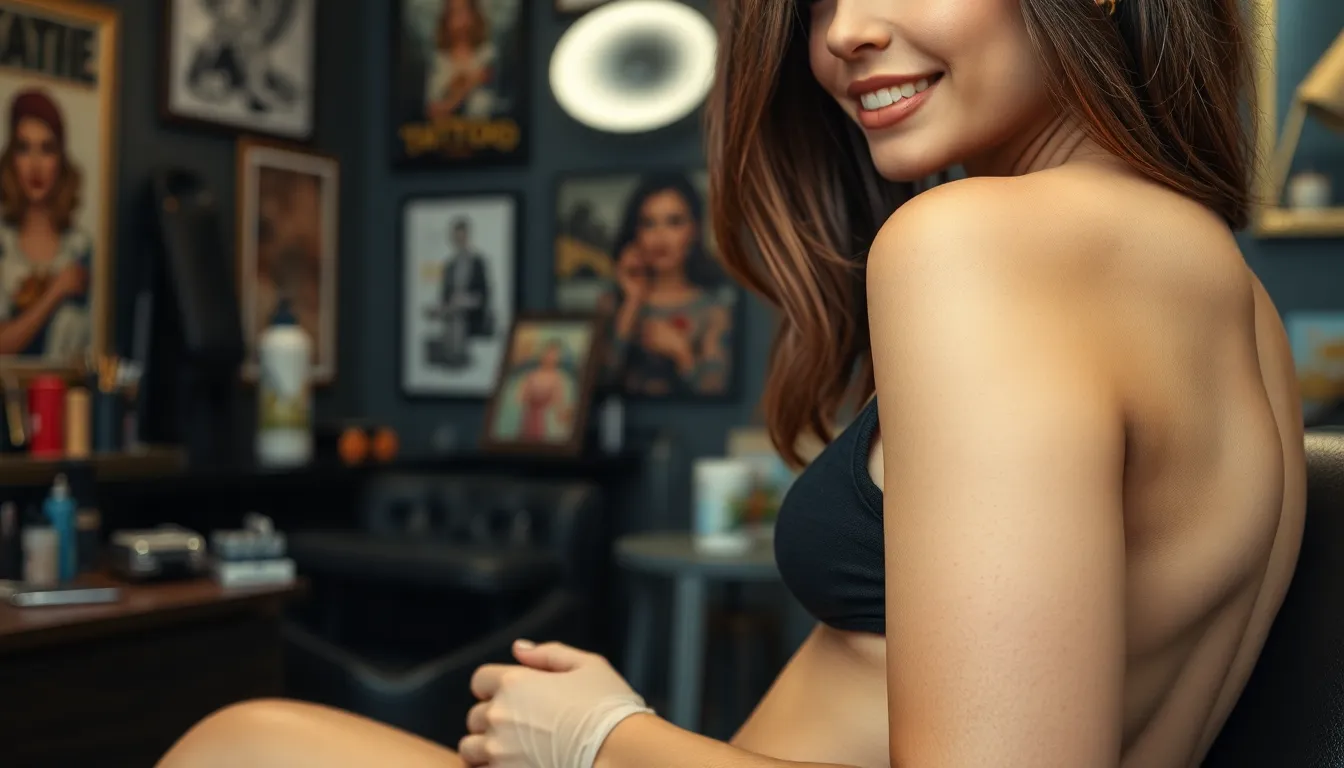
Proper preparation sets the foundation for a successful lower back tattoo cover up that transforms your unwanted ink into beautiful artwork. We’ve compiled essential preparation strategies that’ll help you achieve the best possible results for your cover up session.
Skin Care Before the Session
Hydrate your skin consistently in the weeks leading up to your appointment. Well moisturized skin accepts ink more readily and heals faster than dry or irritated skin. Apply unscented lotion daily to keep your lower back area supple and healthy.
Avoid sun exposure completely for at least two weeks before your session. UV damage compromises your skin’s ability to heal properly and can cause complications during the tattooing process. Sunburned or tanned skin makes it difficult for artists to assess color depth and coverage needs accurately.
Exfoliate gently 3-4 days before your appointment to remove dead skin cells. This creates a smooth canvas for your artist to work on while ensuring better ink absorption. Skip harsh scrubs and opt for gentle body brushes or mild exfoliating products instead.
Stay hydrated internally by drinking plenty of water in the days before your session. Proper hydration improves your skin’s elasticity and helps your body handle the stress of the tattooing process more effectively.
Pain Management Strategies
Use topical anesthetics as recommended by your tattoo artist to minimize discomfort during the session. Apply numbing creams containing lidocaine about 30-45 minutes before your appointment for maximum effectiveness. Always test these products on a small skin patch first to check for allergic reactions.
Practice breathing techniques that’ll help you stay relaxed throughout the procedure. Deep, controlled breathing reduces muscle tension and helps your body cope with pain more effectively. Focus on inhaling slowly through your nose and exhaling through your mouth during uncomfortable moments.
Plan your meal timing carefully to maintain stable blood sugar levels during your session. Eat a substantial meal 1-2 hours before your appointment but avoid consuming it right before, as this can cause nausea. Pack healthy snacks like granola bars or fruit for longer sessions.
Avoid alcohol and caffeine for 24 hours before your appointment. These substances thin your blood and can increase bleeding during the tattooing process, making it harder for your artist to achieve clean lines and solid coverage.
Aftercare Planning
Keep it clean by washing your new tattoo gently with antibacterial soap and lukewarm water. Pat the area dry with a clean paper towel rather than rubbing, which can irritate the fresh ink. Wash your hands thoroughly before touching the tattooed area.
Apply ointment as directed by your tattoo artist to promote proper healing and prevent infection. Use thin layers of recommended healing products like Aquaphor or specialized tattoo aftercare balms. Avoid petroleum based products that can clog pores and interfere with healing.
Avoid tight clothing that might rub against your fresh tattoo for at least two weeks. Loose fitting tops and dresses prevent friction that can damage healing skin and cause ink to fade unevenly. Choose breathable fabrics like cotton that won’t trap moisture against your skin.
Schedule time off from activities that might compromise your healing process. Avoid swimming, hot tubs, and intense workouts for 2-3 weeks after your session. Plan your cover up appointment when you can take proper care of your new tattoo without rushing back to demanding activities.
Common Mistakes to Avoid with Lower Back Tattoo Cover Ups
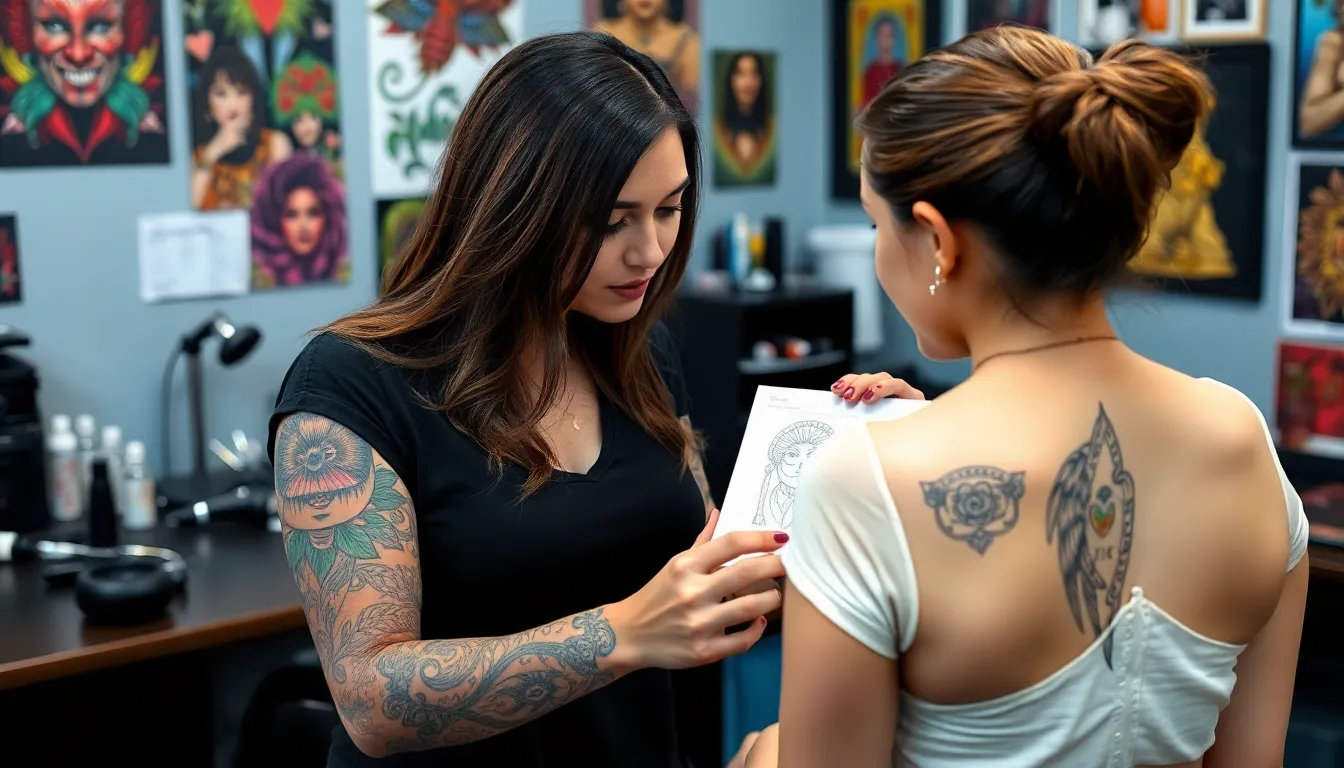
Many women make critical errors during their lower back tattoo cover-up journey that can compromise the final results. We’ve identified the most frequent pitfalls to help you achieve the stunning transformation you’re seeking.
Rushing the Design Process
Impulsive design choices often lead to disappointing cover-up results that require additional correction work. We strongly recommend spending adequate time researching and selecting a design that complements your body shape and personal aesthetic preferences.
Design complexity plays a crucial role in successful cover-ups, particularly when working with existing tattoo elements that need complete concealment. Your original tattoo’s size, color saturation, and placement will significantly influence which designs will work effectively for your transformation.
Taking weeks or even months to finalize your design choice ensures you’ll love the results for years to come. We suggest creating a mood board with various design inspirations and discussing multiple options with your chosen artist before making the final decision.
Ignoring Artist Recommendations
Experienced tattoo artists possess valuable expertise in cover-up techniques that many clients overlook during the consultation process. We’ve seen many cases where ignoring professional advice resulted in suboptimal outcomes that could have been easily avoided.
Artists understand how different ink colors interact with existing tattoos and which design elements will effectively mask unwanted areas. Their recommendations about design placement, size adjustments, and color choices are based on proven experience with successful cover-up transformations.
Professional artists can also identify potential challenges with your exact tattoo that might not be immediately obvious to clients. We recommend listening carefully to their suggestions and asking detailed questions about their proposed approach to ensure you understand the rationale behind their recommendations.
Inadequate Healing Time
Insufficient healing between tattoo sessions can compromise both the appearance and longevity of your cover-up design. We emphasize that proper healing time is essential for achieving optimal results and preventing complications during the cover-up process.
Skin that hasn’t fully recovered from previous tattoo work may not accept new ink properly, leading to uneven color saturation and potential scarring. Your skin needs to be completely healed and strengthened before additional ink application to ensure the best possible outcome.
Most professional artists recommend waiting at least 6-8 weeks between sessions to allow complete tissue recovery. We strongly advise following your artist’s exact healing timeline recommendations, as rushing this process can result in the need for additional touch-up sessions or complete rework of the design.
Conclusion
Transforming an unwanted lower back tattoo into stunning artwork you’ll love doesn’t have to feel overwhelming. With the right approach and careful planning you can achieve remarkable results that exceed your expectations.
Remember that successful cover-ups require patience time and collaboration with skilled artists who understand your vision. Whether you choose flowing florals bold geometrics or meaningful symbols the key lies in selecting designs that resonate with who you are today.
Your tattoo journey doesn’t end with regret – it evolves into something beautiful and personally important. Trust the process embrace the transformation and soon you’ll have artwork that tells your story with pride and confidence.
Frequently Asked Questions
What makes a lower back tattoo cover-up successful?
A successful lower back cover-up depends on assessing the existing tattoo’s size, darkness, and age. The new design must be significantly larger and darker than the original. Choosing an experienced cover-up artist who understands color theory and has a strong portfolio of cover-up work is crucial for achieving optimal results.
How long should I wait before getting a cover-up tattoo?
You should wait at least 6-8 weeks between tattoo sessions to allow proper healing. Rushing the process can lead to complications and poor results. Your skin needs adequate time to recover, and following your artist’s recommended timeline ensures better ink retention and overall appearance.
What design styles work best for lower back cover-ups?
Floral designs, geometric patterns, and nature-inspired themes work exceptionally well for lower back cover-ups. These styles offer ample creative freedom and can effectively conceal unwanted ink. Large rose arrangements, mandala designs, butterfly motifs, and tribal patterns are particularly popular and effective options.
How should I prepare my skin before a cover-up session?
Prepare by hydrating your skin, avoiding sun exposure, and gentle exfoliation 2-3 days before your appointment. Stop using lotions with fragrances 24 hours prior, get adequate sleep, and stay hydrated. Avoid alcohol and blood-thinning medications as recommended by your artist.
What pain management options are available for cover-ups?
Pain management options include topical anesthetic creams applied before the session, practicing breathing exercises, and taking breaks during longer sessions. Some artists recommend over-the-counter pain relievers taken before the appointment. Discuss pain management strategies with your artist beforehand.
How do I choose the right artist for my cover-up?
Research artists who specialize in cover-up work and review their portfolios extensively. Look for examples of similar cover-ups, read client reviews, and schedule consultations to discuss your specific needs. An experienced cover-up artist will understand color theory and design techniques necessary for successful transformations.
What mistakes should I avoid during the cover-up process?
Avoid rushing your design selection, ignoring artist recommendations, and choosing designs that are too small or light. Don’t skip proper aftercare or schedule sessions too close together. Take time to research artists thoroughly and trust professional advice regarding color choices and placement.
How long does the healing process take for a cover-up tattoo?
Initial healing takes 2-4 weeks, but complete healing can take up to 3 months. During the first week, expect some swelling and tenderness. Follow aftercare instructions carefully, including keeping the area clean, applying recommended ointments, and avoiding sun exposure during the healing period.
